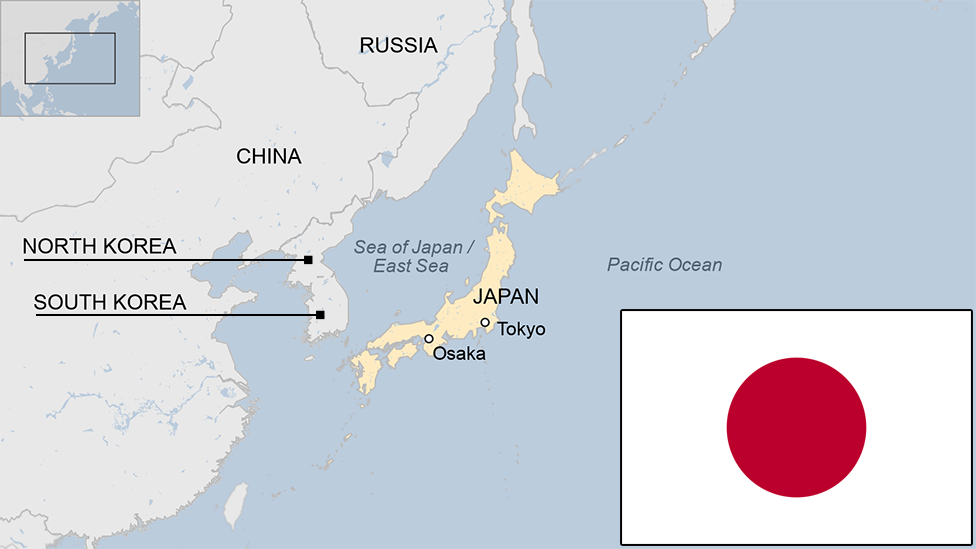Deadly earthquake topples buildings in southern Japan
- Published
An eight-month-old baby was rescued from a collapsed house with no visible injuries
At least nine people have died and more than 250 are injured after a powerful earthquake hit southern Japan, toppling buildings and cutting power supplies.
Officials say more people could be trapped under collapsed buildings.
Thousands fled their homes and many people spent the night in the open in the town of Mashiki, near Kumamoto city on the island of Kyushu.
Troops have been sent to the scene but rescue operations are being disrupted by aftershocks, officials said.
In pictures: Mashiki evacuees huddled in the streets
No tsunami warning was issued after the magnitude 6.4 quake struck at 21:26 on Thursday (12:26 GMT) east of Kumamoto.
Nuclear reactors on the island are not reported to have been affected.
The two Sendai nuclear reactors on Kyushu were operating as normal while the three Genkai nuclear reactors still in operation were already closed for routine inspection.
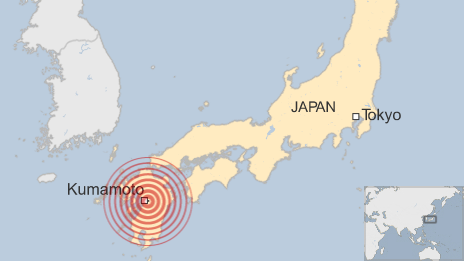
The quake struck at a depth of 10km (six miles) and was followed by aftershocks measuring 5.7 about 40 minutes later and 6.4 just after midnight local time.
But Japan's seismology office recorded the shaking at some places to be as intense as the huge magnitude nine earthquake that hit the country in 2011.
That triggered a tsunami in a double disaster that left more than 18,000 people dead or missing and led to meltdowns at the Fukushima Daiichi nuclear plant.
"The shaking was so violent I couldn't stand still," Hironobu Kosaki, a local police official, told the Associated Press news agency.
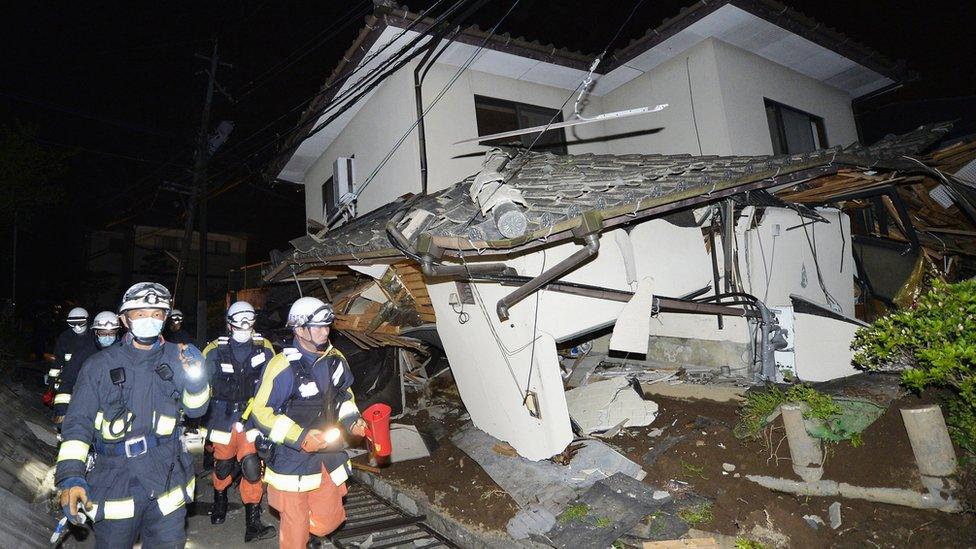
Homes collapsed in the town of Mashiki
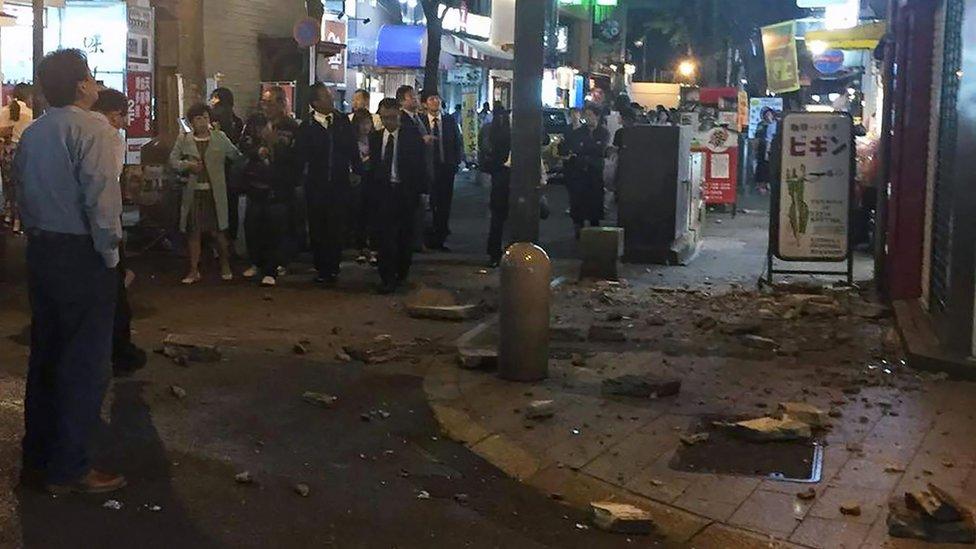
Parts of buildings fell into the streets in Kumamoto city
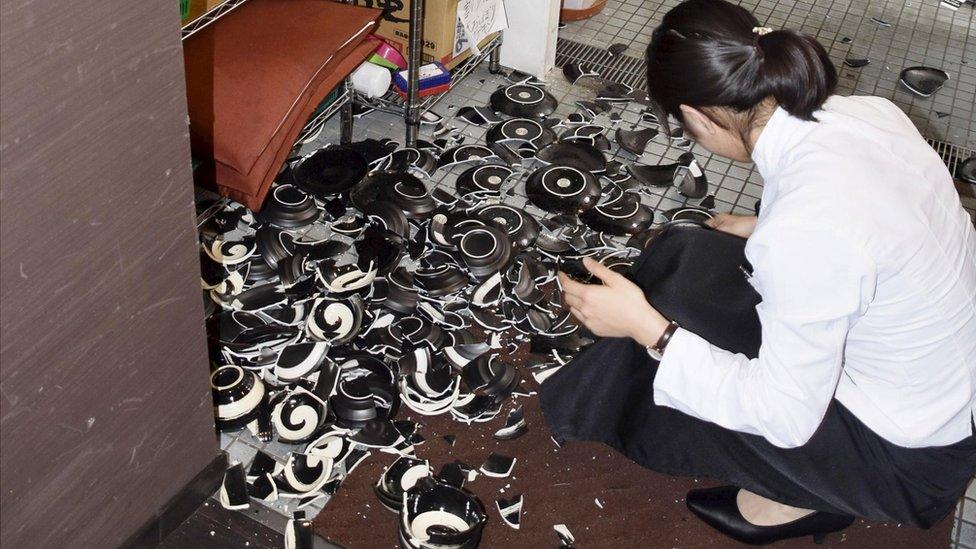
Japan is one of the world's most earthquake-prone countries
Initial reports said two people had died but the toll rose to nine as rescue teams worked through the night.
Yasuhiro Soshino, of the Japanese Red Cross Kumamoto Hospital, told BBC World News on Friday morning that they had received 254 injured people including 15 severe cases.
"Red Cross medical teams in other areas are also gathering at our Red Cross hospital," he said.
Chief Cabinet Secretary Yoshihide Suga said at least 19 houses had collapsed and officials were still assessing the extent of the damage.
Government officials say they are assessing the damage from the quake
About 16,000 homes were left without electricity and 38,000 without gas, reports say.
At least two deaths occurred in Mashiki, where the shaking was most severe. The town lies 15km (nine miles) east of Kumamoto.
One victim died after being pulled from the rubble and another was killed in a fire, Kumamoto prefecture disaster management official Takayuki Matsushita was quoted as saying by the Associated Press news agency.
Mashiki residents said houses and walls had collapsed and the water supply had been cut off.

Local residents reported buildings violently shaking during the quake
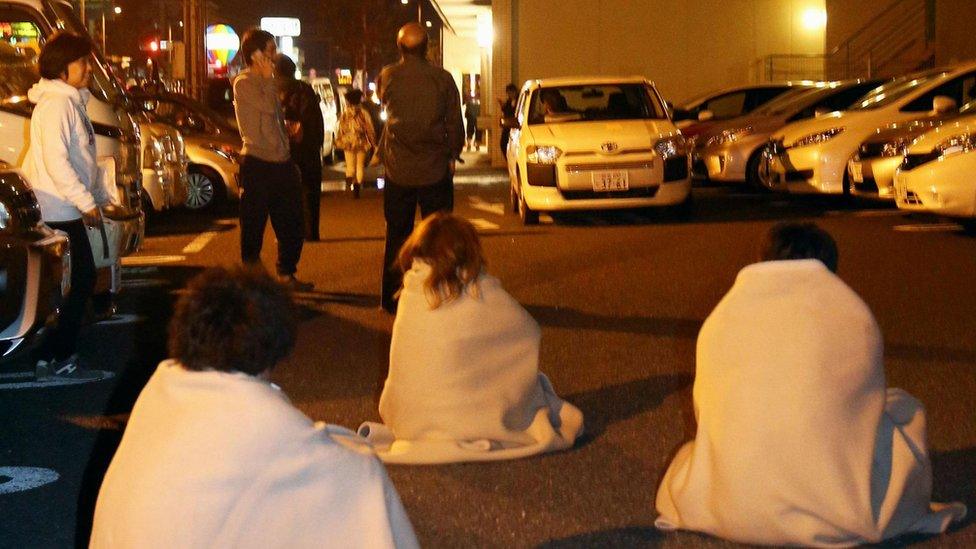
People have been evacuated from some buildings in Kumamoto city
An official in the nearby city of Uki said houses there had also collapsed as well as part of the city hall's ceiling.
The BBC's Japan Correspondent Rupert Wingfield-Hayes says the quake took place at a time when most people were at home.
Some train services were suspended as a precautionary measure.
Japan is regularly struck by earthquakes but stringent building codes mean that damage usually does not occur.
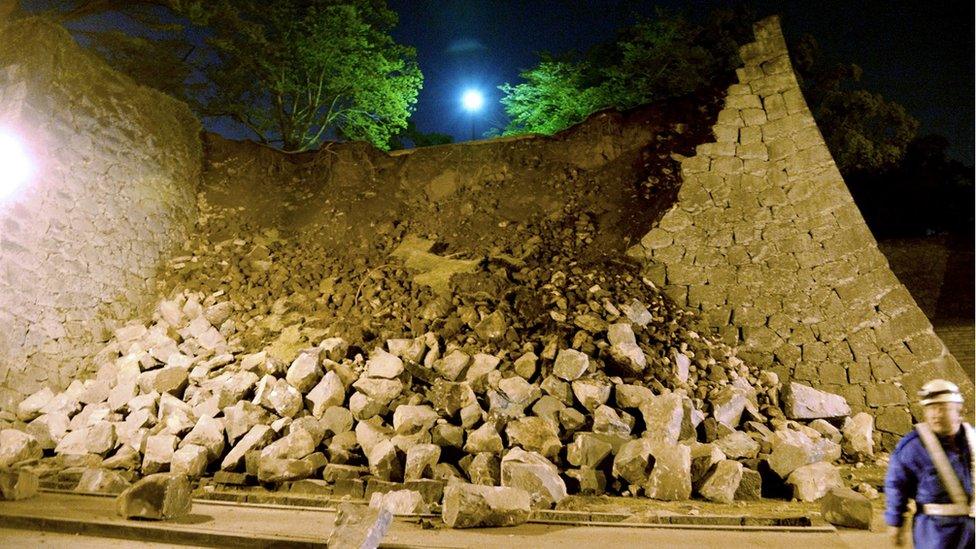
The quake also caused part of the Kumamoto Castle wall to collapse
- Published15 April 2016
- Published24 March 2016
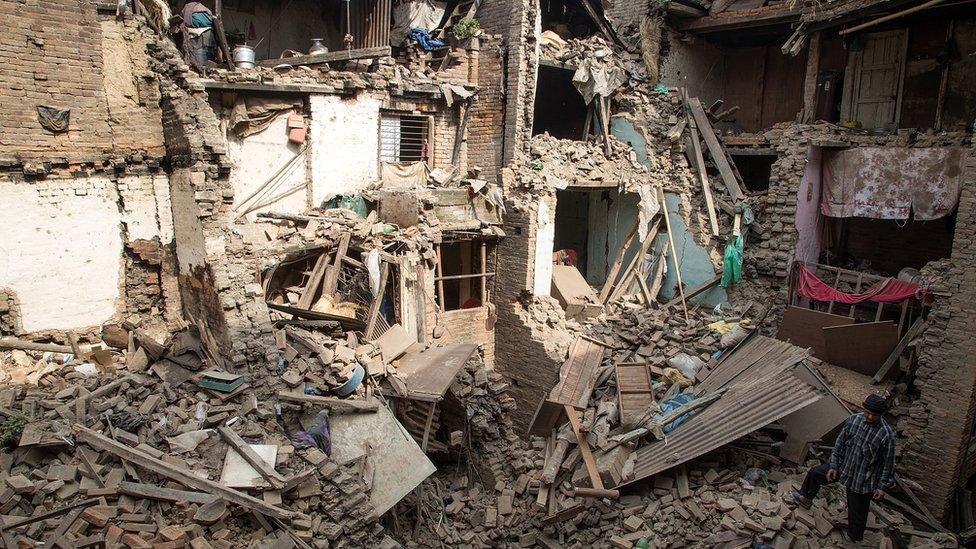
- Published29 October 2024
